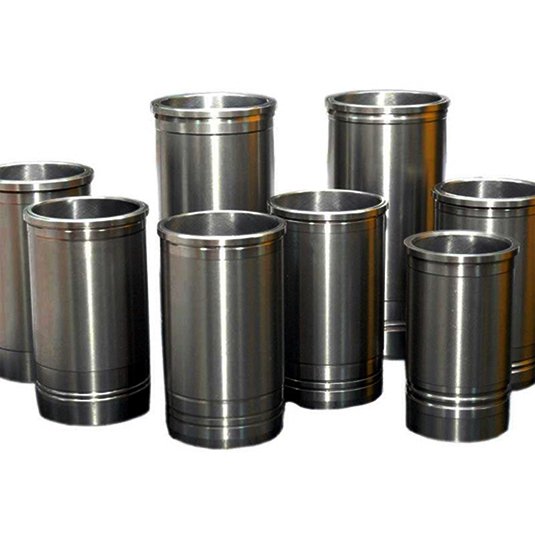The functions of the cylinder liner are:
1. Together with the cylinder head and the piston, the cylinder working space is formed.
2. The cylinder liner of the cylindrical piston diesel engine bears the thrust of the piston side and becomes the lead of the reciprocating movement of the piston.
3. Transfer the heat of the piston assembly and itself to the cooling water to make it work at a proper temperature.
4. The cylinder liner of the two-stroke diesel engine is equipped with gas ports, which are opened and closed by the piston to realize gas distribution.
Working conditions of cylinder linerThe inner surface of the cylinder liner is directly affected by the high temperature and high pressure gas, and always has high-speed sliding friction with the piston ring and piston skirt. The surface is in contact with the cooling water, causing severe thermal stress under a large temperature difference, and being corroded by the cooling water. The side thrust of the piston on the cylinder liner not only aggravates its internal surface friction, but also causes it to bend. When the side thrust changes direction, the piston also hits the cylinder liner. In addition, it is subject to greater installation preload.
The gas pressure causes the cylinder wall to produce tangential tensile stress and radial compressive stress, and the inner surface is the largest. This stress is a high-frequency pulsating stress.
Due to the extreme thermal stress caused by the temperature difference between the inside and outside of the cylinder wall, compressive stress is generated on the inner surface and tensile stress is present on the cooling surface at general temperature. However, under extremely high temperatures, the metal near the inner surface creeps plastically, and after cooling, residual tensile stress is formed on the inner surface. This low-frequency stress caused by changes in starting and stopping will cause material fatigue.





















